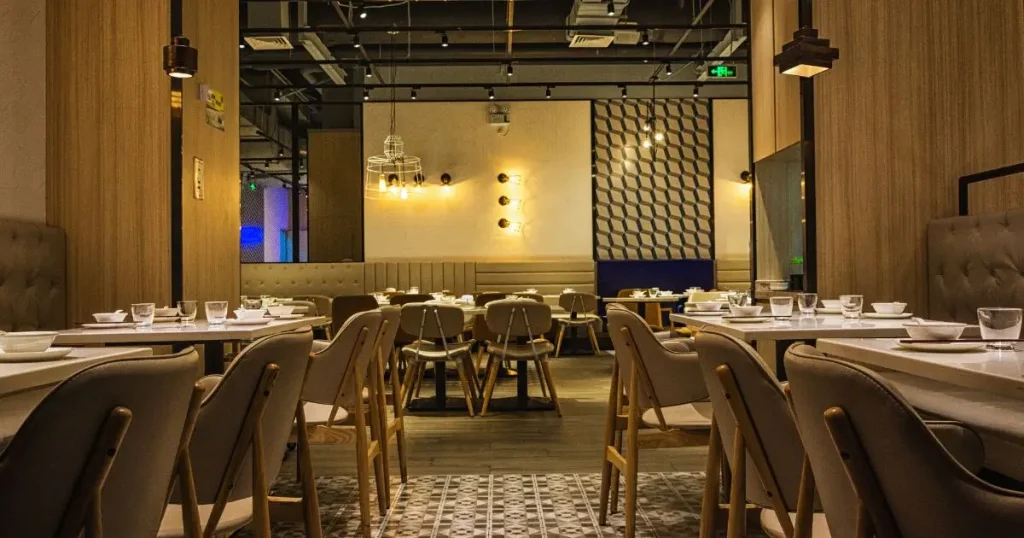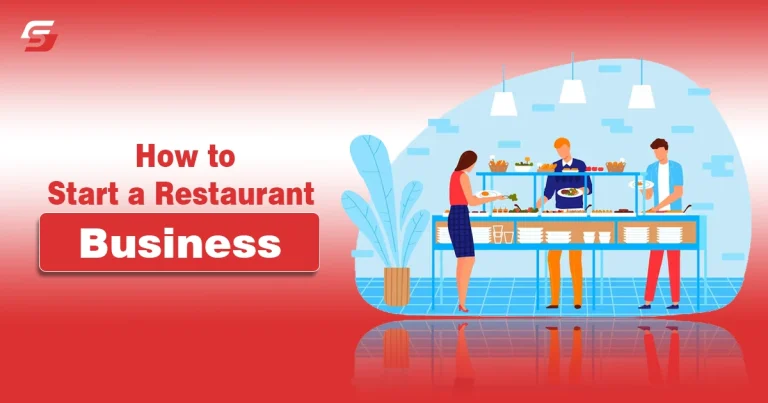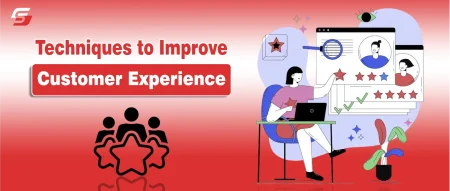I’m a foodie person 😋! What about you?
We often go for outings with all Stuffablog team members to eat delicious food. One of the interesting things is that we only go to one restaurant often, why? Because we love this restaurant’s cuisine and service style.
Our daily visits make our connection strong with hotel management and the team. As a business-minded person once I asked a manager how to start a restaurant his short answer was, to set a budget, find a good chef, and have easy access to high foot traffic locations to start.
I was not satisfied with the answer which is why I consulted with my another friend who is running two high-class restaurants. I talked briefly about the restaurant business and this conversation brings many more things to know about how to start a restaurant business.
In this guide, I am going to share all these aspects from ideas to the legal process to start the restaurant.
Pros and Cons of Restaurant Business
| Pros | Cons |
|---|---|
| Turn passion into a profession | High competition |
| Passive income source | Labor issues |
| Way to feed people with good food | Operation cost and safety issues |
| Help local economy | Demand forecasting |
How to Start a Restaurant Business – A Guide for Beginners
The restaurant business is one of the best business ideas to be your own boss or turn your journey from chef to entrepreneur, but as a beginner, you may not be familiar with how to start a restaurant business.
Here is a complete guide with proper steps to start your own restaurant.
Steps to Start a Restaurant Business
* Choose Restaurant Type and Name
* Set a Budget For Your Restaurant
* Choose a Prime Location
* Create a Strong Business Plan
* Complete the Legal Process for a License
* Design Your Restaurant Interior and Exterior
* Prepare Menu
* Hire a Staff
* Market and Promote Your Restaurant
1. Choose Restaurant Type and Name
Restaurant type is one of the most important factors to keep in mind before you start your own restaurant business. It is about what is your concept and identity that helps to grab customers’ attention. So, you can keep your targeted customers in mind to work further on your concept. Here are examples of Restaurant types:
- First-class restaurants
- Family style restaurant
- Ghost Restaurant
- Local Hotel
- Food trucks
- Virtual restaurants
- Pop-up restaurants
When you have these things in mind, you can make a better plan, budget, staff management, and other things. However, you can also think about what sets you apart from other restaurants and what type of services you want to offer.
Also, some important considerations include:
- Market Analysis: Before you start the business, it is important what kind of restaurants have in your location and what they are offering to their customers. After analysis determine your type and try to give something unique to attract people towards yours.
- Service Style: Choose your service style for your customers. For example, casual dining, fine dining, buffet style, or food truck.
- Cuisine: You should choose cuisine according to your specialty. But you can also consider the local demand and users’ tastes.
- Unique Selling Point (USP): Think widely to know what makes you unique among other competitors. For example, a special cuisine that others are not serving, natural ingredients, or famous cuisine like Sushi.
After, all these things, take time and think about your restaurant name. Choose a unique name that is not used already by another restaurant. This helps you to make a unique identity in the market.
Important Note
Pro Tip: If you do not come with a unique and suitable name, then you can help from online business generator tools to find a suitable name for your restaurant.
2. Set a Budget For Your Restaurant
Budget is the first priority for business because only budget determines what type of business can do. If you have a small investment, then you can think about a small restaurant, home food delivery, or food truck restaurant.
You can do complete research about startup costs to whether they align with your budget or not.
Here is how much it costs to start a restaurant in USA:
According to Toast estimates, the startup cost to open a restaurant in the USA can range anywhere from $175,000 to over $700,000 depending on factors like location, restaurant concept, size, and whether you lease or buy the space, with the average falling around $275,000.
Key factors influencing the cost:
- Location: Prime locations in big cities will be quite more expensive than in smaller towns.
- Restaurant concept: Upscale dining with extensive décor and high-end cuisine will cost more than a casual eatery.
- Space size: A larger restaurant with more seating will require more investment in equipment and furniture.
- Lease vs. Buy: Buying your own property adds a substantial cost to your startup.
Major cost components of opening a restaurant:
- Rent or mortgage payment
- Kitchen equipment
- Furniture and fixtures
- Permits and licenses
- Construction and renovation costs
- Startup inventory (food, beverages)
- Marketing and advertising
- Staff training and salaries
If do not have much budget for a high-class restaurant then you can catch the investor’s attention with a strong restaurant business plan to run the restaurant with collaboration.
3. Choose a Prime Location
You know business success depends on location and area. So, you must conduct research you nearby areas and know which is the perfect location for your restaurant. More foot traffic helps you attract more customers.
Factors to consider while choosing the restaurant business location:
- Foot Traffic: High foot traffic areas can bring more customers to your restaurant. Consider locations near shopping centers, business districts, or tourist attractions.
- Accessibility: Ensure easy access for both pedestrians and vehicles. Proximity to parking lots or public transportation can make a location more attractive.
- Demographics: Understand the demographics of the area, such as age, income level, and lifestyle preferences. Your restaurant concept should align with the local population’s preferences.
- Competition: Assess the nearby competition. A healthy amount can indicate a popular area for dining, but too much might make it harder to stand out.
- Visibility: A visible location with good signage can attract passing customers. Corner locations or spots with large windows are often advantageous.
- Costs: Consider rent or lease costs, which can vary greatly depending on the area. Balance this with potential revenue and foot traffic.
- Infrastructure: Ensure the location has the required infrastructure like proper plumbing, electrical setup, and ventilation suitable for a restaurant.
You can have legal regulations and permits for your restaurant so that you will not have any issues in getting a license or documents.
4. Create a Strong Business Plan
A business plan is a crucial step before you start the business. If you do not have a road map, then how can you be successful? That is why you will need to highlight and note your ideas to create a complete action plan.
Here is what you need to include in a business plan:
- Concept and Menu Development: Clearly define your restaurant concept, target audience, unique selling points, funding, location, and goals.
- Operations Plan: Describe your restaurant’s daily operations, For example, staff requirements, suppliers, equipment needs, and inventory management strategies.
- Marketing and Sales Strategy: Now here show how you will attract and retain customers. Include your branding strategy, online presence (website and social media), promotions, and advertising plans.
- Financial Projections: Provide detailed financial forecasts like startup costs, revenue projections, and break-even analysis.
- Management Team: Introduce your management team and their relevant experience.
- Legal and Regulatory Compliance: Detail your business plan addresses all legal and regulatory requirements, including permits, licenses, health and safety
It will help you if you want to involve investors in your restaurant; you can share your business plan to impress them and make them ready to invest.

5. Complete the Legal Process for a License
After a business plan, now it’s time to implement it practically to start your own restaurant. Register your restaurant from your district legal authority. You will also need a license and permits to run your restaurant.
What to do for the legal process?
a) Choose Your Business Structure Type
It is an important step to choose a legal structure. A legal structure will impact your liability, filing fees, tax obligations, and maintenance.
Examples of Business legal structure:
- Sole proprietorship
- Limited liability company
- Limited liability partnership
- General partnership
- Corporation
b) Go further for registration
First of all, check your chosen name is available. For your restaurant registration, you will need a registered agent. Make sure to contact your region’s license provider agencies to get permits and work legally. An agent completes all the legal processes on behalf of your restaurant business.
c) Apply for Tax Registration
Get ready for your taxes. To do so, you will need to register under the state’s Secretary’s office. For your restaurant business’s unique identity, apply for an Employer Identification Number (EIN) via an online application on the IRS.
Also, register with any reliable tax agency for income, sale, and employee taxes.
Important Note
Pro Tip: You will need different types of licenses from different authorities, such as Business licenses, food service permits, sign permits, and liquor permits. Keep all legal documents safe in your restaurant and whenever needed.
6. Design Your Restaurant Interior and Exterior
Restaurant design impacts customers’ minds. If your restaurant’s interior look and theme are classy and elegant, then there is more chance that customers will return to your restaurant.
You can focus on your restaurant design and give it a classy look that attractive people.
Here are some consideration factors for designing your restaurant layout and space:
- Concept and Theme: Your layout should reflect the restaurant’s concept (e.g., fine dining, casual, fast food) and theme. The décor, seating style, and overall ambiance should align with your brand identity.
- Seating Capacity vs. Comfort: Maximize seating without compromising comfort. Overcrowding can affect the dining experience, while too few tables might limit revenue.
- Kitchen Design: The kitchen should be functional and efficient. Consider a layout that supports the cooking process, like the assembly line for fast service or zone-style for fine dining.
- Ambiance and Lighting: Use lighting to create the desired atmosphere. Natural light is a plus, but adjustable lighting can help set different moods for day and night.
- HVAC and Ventilation: Proper ventilation is essential, especially near the kitchen, to ensure air quality and comfort.
- Restroom Placement: Restrooms should be easy to find but not directly visible from dining areas. Ensure they are clean, spacious, and accessible.
- Technology Integration: Plan for POS systems, Wi-Fi access, sound systems, and other tech needs.
A dark black and grey theme is best for the interior and set furniture table according to the theme. Also, design the exterior side of the restaurant with your restaurant name so that customers easily find the restaurant.

7. Prepare Menu
Create a menu according to your cuisine and the dishes you want to serve your customers. A menu contains all the details of your restaurant dishes, food, and deals. You can consider a digital menu for your restaurant.
You can decide what to add and what to not add to your menu. So an attractive menu with more dishes is helpful to make your customers loyal.
Here is what you should consider for your menu preparation:
- Write Items: Write all the dishes you are going to serve in your restaurant.
- Create Categories: You can divide your menu into logical sections like appetizers, soups/salads, main courses, desserts, beverages, etc.
- Select Dishes: Choose a variety of dishes that complement your restaurant’s theme and appeal to your target audience.
- Write Descriptions: Write descriptions for each dish. Use descriptive language to highlight the ingredients, flavors, and cooking methods.
- Pricing: Determine the pricing strategy based on food cost, market trends, and your restaurant’s positioning.
- Design Layout: Design the physical layout of your menu. You can consider the typography, colors, and overall aesthetic to match your restaurant’s branding.
- Finalize and Print: After making important revisions, finalize your menu design. Print it on quality paper or consider digital menus if that fits your restaurant’s style.
Important Note
Pro Tip: It is important to mention the price for each dish so that your customer will not have to ask for the price, and they can choose according to their taste and budget.
8. Hire Staff
Running a restaurant by a single person is an impossible thing. It is important to hire the right staff for your restaurant to ensure they help you in handling customer and business success. You will need workers for different roles, so make sure to hire the right people for each role.
You will need different types of staff members for different duties:
Front House – Serving Staff
- Host
- Server
- Bartender
- Cashier
Backend – Kitchen Staff
- Chef
- Prep Cooks
- Line Cooks
- Food Runner
- Dishwasher
Management Staff
- Restaurant Manager
- Kitchen Manager
- Accountant
- Marketing Manager
You can hire staff by Advertising your requirements and calling to interview interested persons.

9. Market and Promote Your Restaurant
Restaurant marketing is essential for customer retention. Before you launch the restaurant, make sure to hire and plan a complete marketing strategy to reach your desired customers.
There are several ways to promote and market your business for example:
- Influencers collaboration
- social media platforms
- Digital media
- Print media
- Advertisements
- Magazine announcements
Also, an online presence can help you attract more customers. So, make sure to create a business website, Instagram account, and other social media business pages.
According to Zippia restaurant statistics, 94% of customers search and read reviews online before going to. In this way, online presence brings potential customers to your restaurant.
Important Note
Pro Tip: You can invite celebrities and influencers to the opening ceremony for promotion. Leverage different social media pages for advertisement. Offer rewards and deals to your new customers to attract more people.
Closing Note
There are some considerations before you start a restaurant business. You will need a budget, plan, license, permissions, and many more for your restaurant. However, keep in mind your business plan serves as a road map to your success journey.
Choose the type of restaurant, analyze your competitors, and determine what you can offer unique to your customers. Choose a prime location near a busy area or market and design your restaurant with a classy theme. Hire staff, give everyone roles according to abilities, and promote your business.












1 Comment
Pingback: 12 Frozen Margarita Recipes You Need to Try